Deepayan Chakraborty
ECGN: A Cluster-Aware Approach to Graph Neural Networks for Imbalanced Classification
Oct 15, 2024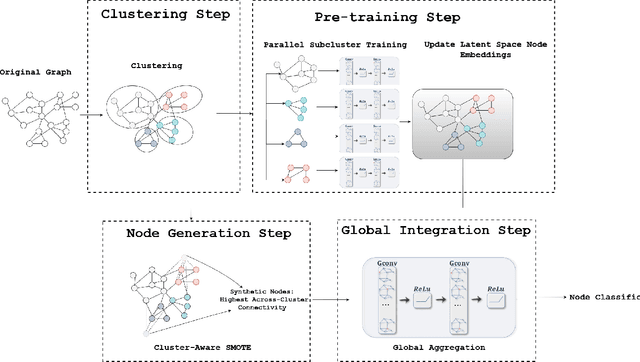



Abstract:Classifying nodes in a graph is a common problem. The ideal classifier must adapt to any imbalances in the class distribution. It must also use information in the clustering structure of real-world graphs. Existing Graph Neural Networks (GNNs) have not addressed both problems together. We propose the Enhanced Cluster-aware Graph Network (ECGN), a novel method that addresses these issues by integrating cluster-specific training with synthetic node generation. Unlike traditional GNNs that apply the same node update process for all nodes, ECGN learns different aggregations for different clusters. We also use the clusters to generate new minority-class nodes in a way that helps clarify the inter-class decision boundary. By combining cluster-aware embeddings with a global integration step, ECGN enhances the quality of the resulting node embeddings. Our method works with any underlying GNN and any cluster generation technique. Experimental results show that ECGN consistently outperforms its closest competitors by up to 11% on some widely studied benchmark datasets.
Text Extraction and Restoration of Old Handwritten Documents
Jan 23, 2020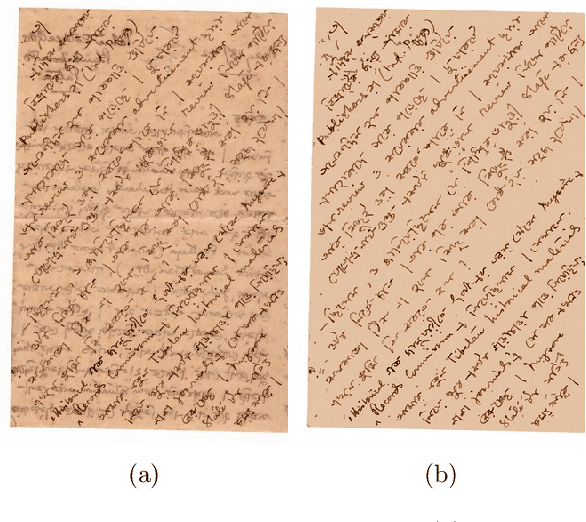
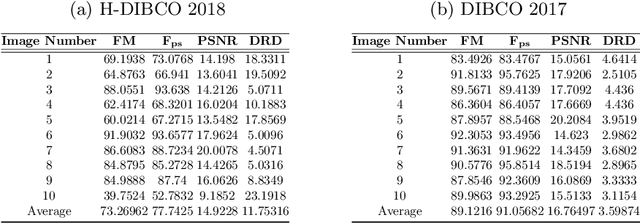
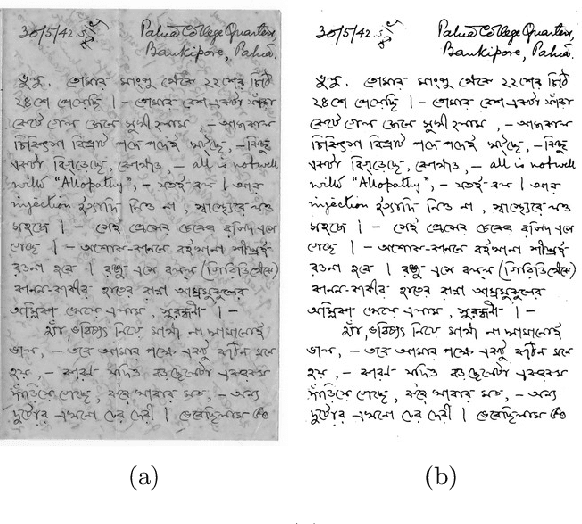
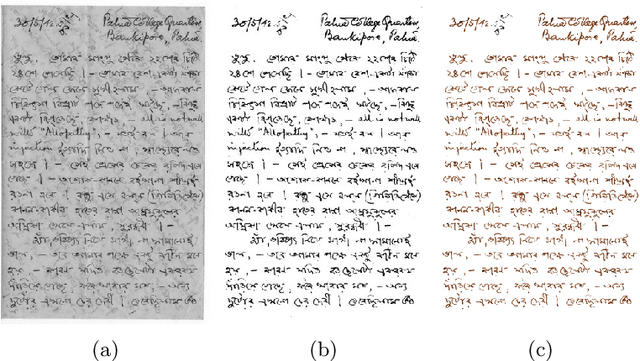
Abstract:Image restoration is very crucial computer vision task. This paper describes two novel methods for the restoration of old degraded handwritten documents using deep neural network. In addition to that, a small-scale dataset of 26 heritage letters images is introduced. The ground truth data to train the desired network is generated semi automatically involving a pragmatic combination of color transformation, Gaussian mixture model based segmentation and shape correction by using mathematical morphological operators. In the first approach, a deep neural network has been used for text extraction from the document image and later background reconstruction has been done using Gaussian mixture modeling. But Gaussian mixture modelling requires to set parameters manually, to alleviate this we propose a second approach where the background reconstruction and foreground extraction (which which includes extracting text with its original colour) both has been done using deep neural network. Experiments demonstrate that the proposed systems perform well on handwritten document images with severe degradations, even when trained with small dataset. Hence, the proposed methods are ideally suited for digital heritage preservation repositories. It is worth mentioning that, these methods can be extended easily for printed degraded documents.
 Add to Chrome
Add to Chrome Add to Firefox
Add to Firefox Add to Edge
Add to Edge